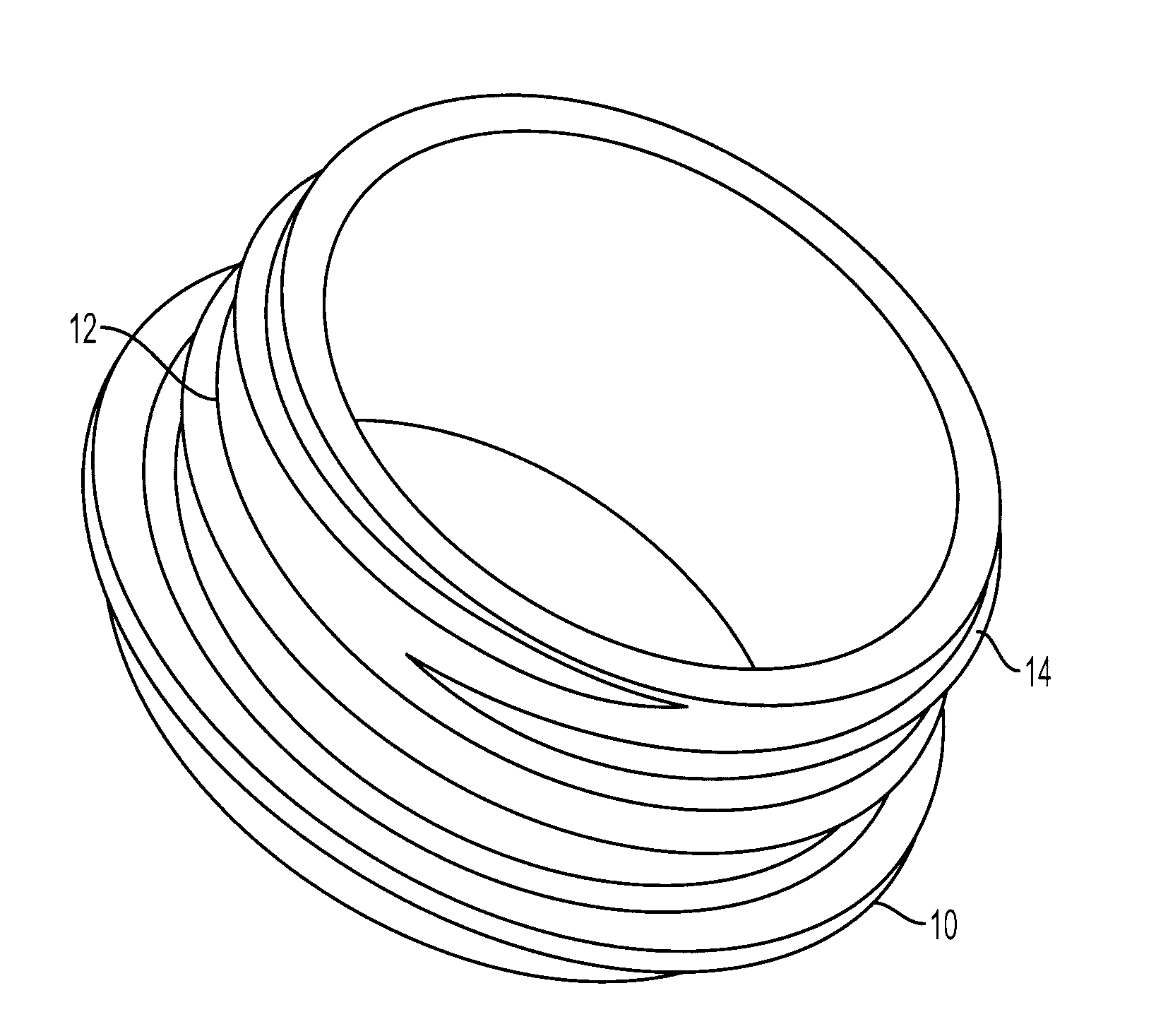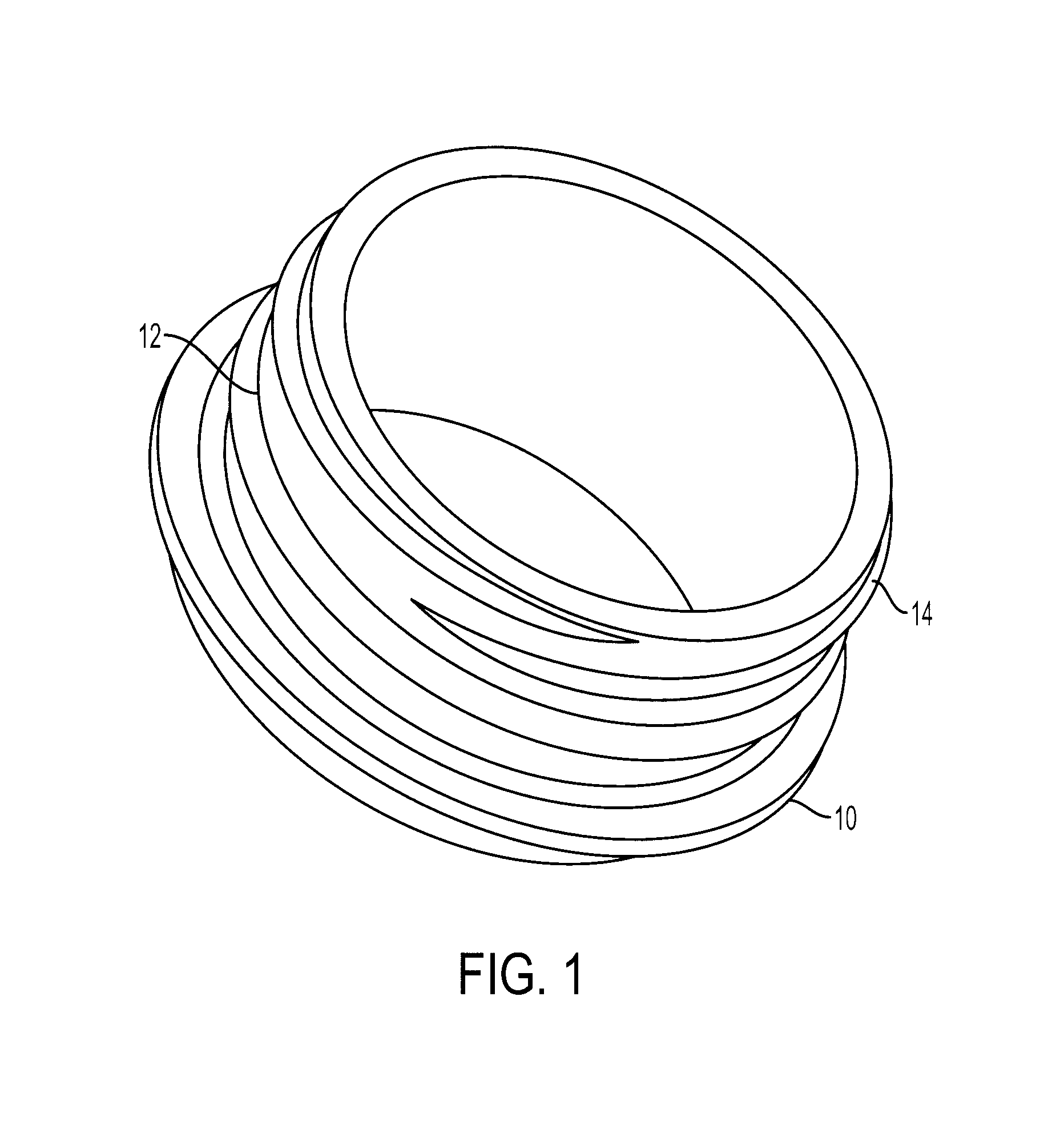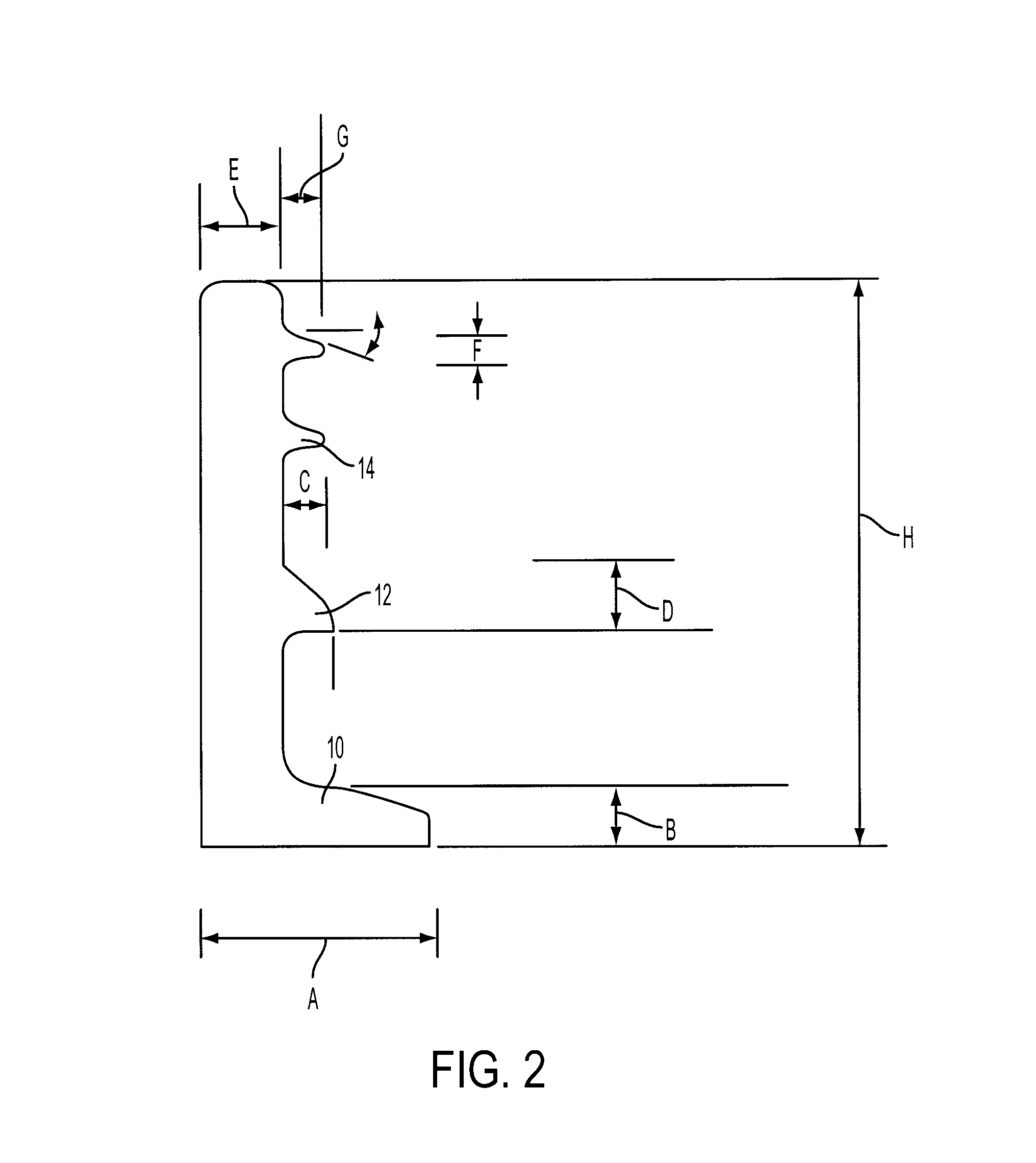Lightweight Finish for Hot-fill Container
a technology for hot-fill containers and finish, which is applied in the directions of caps, liquid handling, transportation and packaging, etc., can solve the problems of increasing the amount of time available, failure of the neck, etc., and achieves adequate dimensional stability, less material, and less material
- Summary
- Abstract
- Description
- Claims
- Application Information
AI Technical Summary
Benefits of technology
Problems solved by technology
Method used
Image
Examples
Embodiment Construction
[0013]The lightweight finish described herein is adapted for implementation in hot-fill containers. Such containers may vary in size and shape, and by way of example may have a volume ranging from about 6 to 24 ounces, often from about 8 to 20 ounces. Specific examples include juice containers having volumes of 10 oz. and 15.2 oz. The containers often are constructed from thermoplastic polyesters, such as polyethylene terephthalate (PET) or PET-based polymeric materials. Among the considerations in developing the lightweight closure were finish stability (both ovality and perpendicularity), thread pitch to eliminate closure back-off, and finish / closure compatibility.
[0014]With reference to FIG. 1, a hot-fill container neck finish typically has an outer surface having an annular lower flange 10 and an annular upper flange 12. The outer surface also includes threads 14 located above the annular upper flange 12. The threads 14 can be configured to receive a suitable closure, such as a ...
PUM
| Property | Measurement | Unit |
|---|---|---|
| weight | aaaaa | aaaaa |
| weight | aaaaa | aaaaa |
| height | aaaaa | aaaaa |
Abstract
Description
Claims
Application Information
 Login to View More
Login to View More - R&D
- Intellectual Property
- Life Sciences
- Materials
- Tech Scout
- Unparalleled Data Quality
- Higher Quality Content
- 60% Fewer Hallucinations
Browse by: Latest US Patents, China's latest patents, Technical Efficacy Thesaurus, Application Domain, Technology Topic, Popular Technical Reports.
© 2025 PatSnap. All rights reserved.Legal|Privacy policy|Modern Slavery Act Transparency Statement|Sitemap|About US| Contact US: help@patsnap.com



